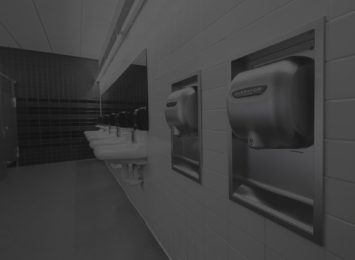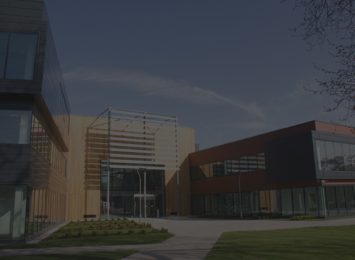Niles Township School District - Chicago, IL
Waste Reduction in Restrooms Helps School District Save Time and Money
XLERATOR® USES 80% LESS ENERGY TRANSLATING INTO AN ELECTRICAL CONSUMPTION SAVINGS OF $4,160 ANNUALLY
Situated just north of Chicago, Niles Township School District 219 serves over 4,800 students from portions of Lincolnwood, Morton Grove, Niles and Skokie, Illinois. This sprawling district includes two high schools, which, similar to other schools across the country, are facing cutbacks that force administrators to closely examine the use of every budget dollar.

“Our student restrooms had both paper towels and traditional hand dryers, but we were constantly dealing with vandalism, blocked toilets and more, which translated into an extra four hours of clean-up every night. This was costing us an extra $16,500 per year in restroom maintenance!”
Joe Tomaselli
Aramark Director of Opertations
Joe Tomaselli, Aramark director of operations for Niles Township School District 219, says that administrators recently took advantage of the schools’ renovations to re-evaluate expenditures in a number of facility-related areas. “Restrooms had always been an area where we faced a lot of extra work,” says Tomaselli. “Our student restrooms had both paper towels and traditional hand dryers, but we were constantly dealing with vandalism, blocked toilets and more, which translated into an extra four hours of clean-up every night. This was costing us an extra $16,500 per year in restroom maintenance!”
Furthermore, the schools were spending an estimated $12,500 per year on paper towels, not including the additional costs associated with running hand dryers for 30 seconds per use.
After researching alternatives for source reduction, Tomaselli decided to install XLERATOR hand dryers in the restrooms. “In terms of energy savings, these dryers require an average of 7 Amps per use, compared to the traditional 17 to 20 Amps. Plus, they dry hands three times faster than traditional dryers and shut off two seconds after the hands are removed from the sensor area.” Annually, this translates into an electrical consumption savings of $52 per unit, or for 80 units, $4,160 per year in savings. The dryers delivered a return on investment in two years. “Once we did the math, the cost savings were clear.”
Additionally, the installation of the dryers addressed the schools’ desire to incorporate more “green products” into the building. “Through this renovation, we were also able to set an example for students about the importance of reducing waste and making smart decisions about energy conservation,” Tomaselli commented.
















